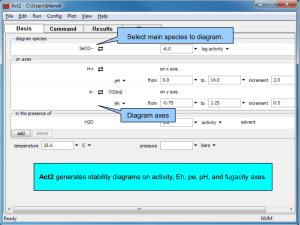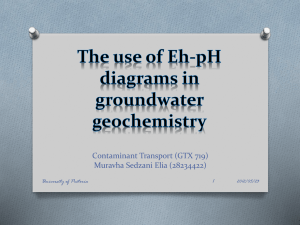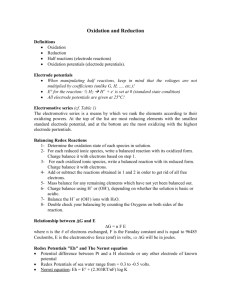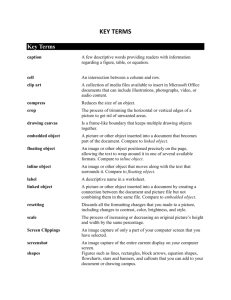Eh-pH Diagrams
advertisement
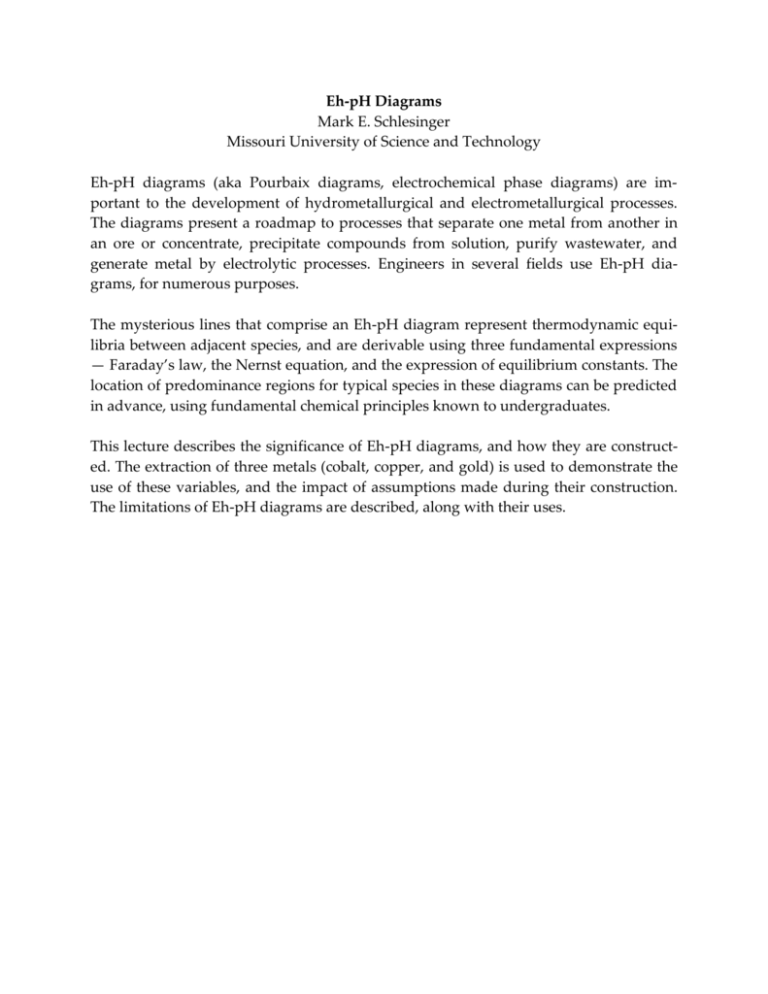
Eh-pH Diagrams Mark E. Schlesinger Missouri University of Science and Technology Eh-pH diagrams (aka Pourbaix diagrams, electrochemical phase diagrams) are important to the development of hydrometallurgical and electrometallurgical processes. The diagrams present a roadmap to processes that separate one metal from another in an ore or concentrate, precipitate compounds from solution, purify wastewater, and generate metal by electrolytic processes. Engineers in several fields use Eh-pH diagrams, for numerous purposes. The mysterious lines that comprise an Eh-pH diagram represent thermodynamic equilibria between adjacent species, and are derivable using three fundamental expressions — Faraday’s law, the Nernst equation, and the expression of equilibrium constants. The location of predominance regions for typical species in these diagrams can be predicted in advance, using fundamental chemical principles known to undergraduates. This lecture describes the significance of Eh-pH diagrams, and how they are constructed. The extraction of three metals (cobalt, copper, and gold) is used to demonstrate the use of these variables, and the impact of assumptions made during their construction. The limitations of Eh-pH diagrams are described, along with their uses. Notes 1. This lecture presumes that students know how to balance an electrochemical reaction, and are familiar with Faraday’s Law, the Nernst equation, and the calculation of equilibrium constants. 2. Figures used in this presentation have been reproduced from Process Principles in Minerals and Materials Production by Peter Hayes, and Hydrometallurgy by S. Venkatachalam. 3. Eh-pH diagrams can now be generated by computer, but having students generate one by hand (Cu-Cl-H2O is a good example) makes the principles easier to understand, if time is available. Questions 1. Name five constant values which need to be set to construct an Eh-pH diagram. 2. The predominance area for a metal in an Eh-pH diagram is at the (a) left (b) right (c) top (d) bottom of the diagram. 3. What is the oxidation state of copper in cuprate (CuO22–) ions? 4. Will the line in an Eh-pH diagram representing the expression CuCl2– + e– = Cu + 2 Cl– be diagonal, horizontal, or vertical? 5. The predominance regions for Au3+ and Au(OH)3 in the Au-H2O Eh-pH diagram are separated by a vertical line at pH ≈ 1 when the activity of Au3+ is set at 10–4. If the activity of Au3+ were rest to 10–6, would the line (a) move to the left, (b) move to the right, (c) stay where it is, or (d) disappear? 6. Which is the correct electrochemical reaction used to draw a line between the predominance regions for Cu2O and Cu in the Cu-H2O Eh-pH diagram? (a) Cu2O = 2 Cu + ½ O2 (b) Cu2O + 2 H+ + 2 e– = 2 Cu + H2O (c) Cu2O + H2 = Cu + H2O (d) Cu2O = 2 Cu + O Answers 1. Constants which are set include temperature; the activity of water (usually one); the activity of solid compounds (also one); the chemical potential of elements other than the metal, hydrogen, and oxygen; the required activity of ions containing the metal (usually between 10–3 and 10–6). 2. The most reducing conditions are at the bottom of an Eh-pH diagram, so this is where the metal will be the predominant phase. 3. Since the oxidation state of oxygen in this ion is –2, the oxidation state of copper is +2. [(+2) + 2(–2) = (–2).] 4. Because this half–cell reaction features electrons but no hydrogen ions, the line separating predominance regions for CuCl2– and metallic Cu will be horizontal. 5. Predominance regions for ions in equilibrium with a solid increase when the set activity is reduced. As a result, reducing the set activity of Au3+ from 10–4 to 10–6 would move the line to the right. 6. Half–cells reactions are balanced using H2O as a source of oxygen, H+ to balance hydrogen, and e– to balance the charge. (b) is the correct answer.



